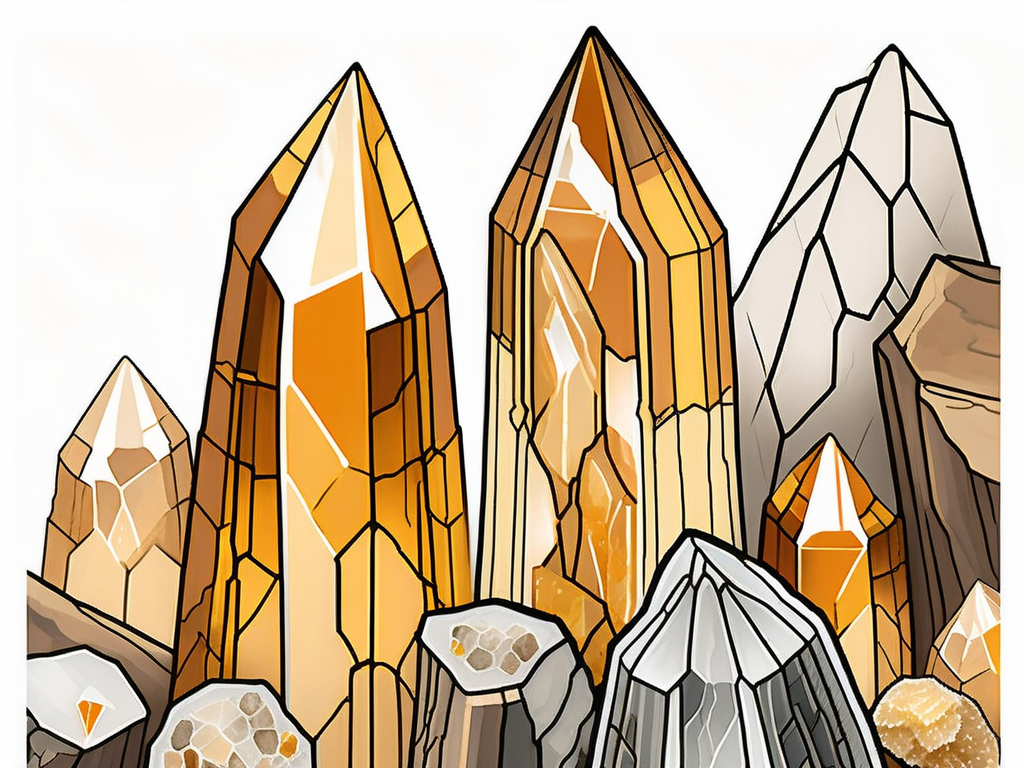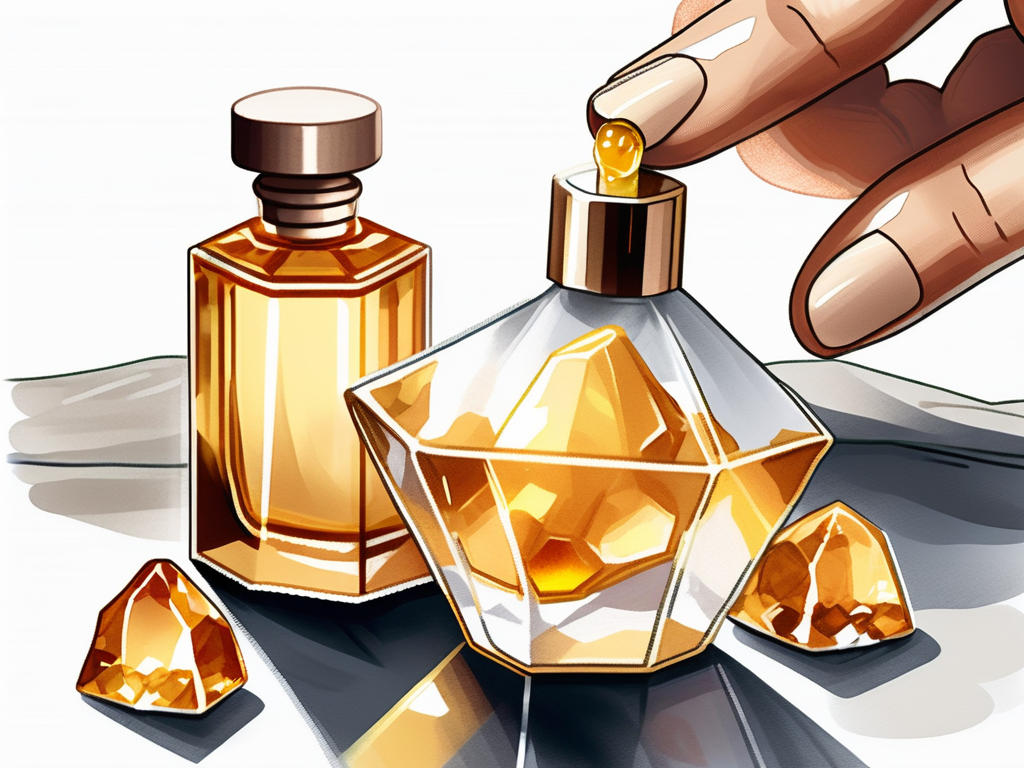Uncovering the Meaning of Citrine
Citrine is a gemstone that has fascinated people throughout history. Its beautiful golden hue and sparkling appearance have made it a popular choice for jewelry and decorative items. But there is much more to citrine than meets the eye. In this article, we will delve into the historical significance, geological origins, metaphysical properties, and aesthetic appeal of citrine. We'll also provide tips on how to care for this precious gem. So, let's embark on a journey of discovery as we uncover the true meaning of citrine.
The Historical Significance of Citrine
The history of citrine dates back thousands of years. This gemstone has been cherished by various cultures for its vibrant color and believed powers. In ancient times, citrine was associated with the sun and was thought to bring warmth, abundance, and vitality to its wearer.
Legend has it that citrine was also considered a stone of manifestation, carrying the power to attract prosperity and success. Its golden hues were believed to symbolize the energy of the sun, bringing light and positivity into the lives of those who possessed it. Ancient civilizations often used citrine not just for its beauty, but also for its metaphysical properties.
Ancient Beliefs and Uses of Citrine
Throughout ancient civilizations, citrine was highly revered for its alleged healing properties. It was believed to protect against evil spirits, promote clarity of mind, and even ward off snake venom. Many ancient societies used citrine in talismans, amulets, and ritual objects.
Furthermore, citrine was often associated with the solar plexus chakra, believed to be the center of personal power and self-confidence. It was thought that wearing citrine jewelry could help balance this chakra, leading to a sense of empowerment and inner strength.
Citrine in the Middle Ages and Renaissance
During the Middle Ages and Renaissance, citrine continued to be held in high regard. It was associated with wealth, prosperity, and success. Citrine was often used to adorn crowns, scepters, and other royal regalia. Its sunny glow was believed to bestow good fortune upon the wearer.
In addition to its symbolic meanings, citrine was also used in alchemy during the Middle Ages. Alchemists believed that citrine held the power to transmute negative energy into positive energy, making it a valuable tool in their quest for spiritual enlightenment and transformation.
The Geology of Citrine
Understanding the geology of citrine helps us appreciate its rarity and beauty. Citrine is a variety of quartz, a mineral that forms in the Earth's crust. It owes its golden color to iron impurities in the crystal lattice structure.

Quartz, the mineral group to which citrine belongs, is one of the most abundant minerals on Earth. It can be found in various geological settings, from igneous rocks like granite to sedimentary rocks like sandstone. Citrine's formation involves the precipitation of silicon dioxide from hydrothermal fluids, creating the distinct yellow to orange hues that captivate gemstone enthusiasts.
Formation and Mining of Citrine
Citrine forms under specific conditions of heat and pressure. It is often found in association with amethyst, another variety of quartz. The mining process involves extracting citrine-bearing rocks from the earth and then carefully cutting and polishing them to reveal their dazzling beauty.
Due to its scarcity compared to other quartz varieties, such as amethyst and clear quartz, citrine is highly sought after in the gemstone market. Miners must navigate challenging terrains and use specialized tools to extract citrine crystals without damaging their delicate structures. The cutting and polishing of citrine gemstones require precision and expertise to enhance their natural brilliance and maximize their value in the jewelry industry.
Locations of Citrine Deposits Worldwide
Citrine deposits can be found in various parts of the world. Some notable sources include Brazil, Madagascar, Russia, and the United States. These regions are known for producing citrine gemstones of exceptional quality and color.
Brazil, particularly the state of Rio Grande do Sul, is renowned for its abundant citrine deposits, ranging from pale yellow to deep amber hues. Madagascar is another significant producer of citrine, with gem-quality stones often displaying a rich golden color. In Russia, the Ural Mountains yield citrine crystals with unique inclusions, adding character to the gemstones. The United States, notably Colorado and North Carolina, also boasts citrine deposits that contribute to the global supply of this captivating quartz variety.
The Metaphysical Properties of Citrine
Beyond its physical beauty, citrine is believed to possess metaphysical properties that promote positivity and abundance. Many crystal healers and energy practitioners incorporate citrine into their practices.
Citrine is a variety of quartz known for its vibrant yellow color, reminiscent of the sun's warm glow. This radiant gemstone is often referred to as the "merchant's stone" due to its association with wealth and prosperity. In addition to its aesthetic appeal, citrine is highly valued for its metaphysical properties, making it a popular choice for those seeking to enhance their spiritual well-being.
Citrine in Crystal Healing
In crystal healing, citrine is often used to cleanse and energize the chakras. Its sunny energy is believed to help dispel negative energies and bring about a sense of joy and enthusiasm. It is also thought to enhance creativity and self-expression.
Crystal healers harness the vibrational energy of citrine to stimulate the solar plexus chakra, the energy center responsible for personal power and self-confidence. By incorporating citrine into their healing practices, practitioners aim to create a harmonious flow of energy throughout the body, promoting a sense of balance and well-being.
Citrine and Chakra Balancing
Citrine is associated with the solar plexus chakra, which is located in the abdomen. It is believed that wearing or holding citrine can help balance this energy center, promoting confidence, self-esteem, and personal power.
Individuals seeking to align their chakras and enhance their spiritual growth often turn to citrine for its uplifting and transformative properties. Whether used in meditation, energy work, or simply worn as jewelry, citrine is revered for its ability to bring light and positivity into one's life.
The Aesthetics of Citrine
Beyond its metaphysical properties, citrine is highly valued for its aesthetic appeal. Its warm golden hue evokes feelings of happiness and abundance. Citrine is a variety of quartz known for its sunny yellow color, ranging from pale to deep golden tones. This gemstone is often associated with positivity, success, and wealth, making it a popular choice for both jewelry and home decor.

When citrine is formed naturally, it is a result of heat treatment applied to amethyst, which causes its color to change to yellow or orange hues. This process is what gives citrine its unique blend of beauty and energy. The gemstone is commonly found in Brazil, Bolivia, Spain, and parts of Africa.
Citrine in Jewelry Design
Citrine's vibrant color makes it a popular choice for jewelry designers. It can be set in various precious metals, such as gold or silver, to create stunning pieces. Citrine necklaces, rings, earrings, and bracelets are all coveted additions to any jewelry collection. The versatility of citrine allows it to be paired with other gemstones like amethyst, topaz, or diamonds to enhance its beauty and create eye-catching designs.
Citrine in Home Decor
Not limited to jewelry, citrine is often used in home decor to add a touch of elegance and warmth. Citrine crystals or polished stones can be displayed in bowls, on shelves, or incorporated into decorative objects. Their beauty can enhance any living space. In Feng Shui, citrine is believed to attract wealth and abundance when placed in the wealth corner of a room. This gemstone is also thought to bring positive energy and clarity to its surroundings, making it a popular choice for interior decorators looking to create harmonious spaces.
Caring for Your Citrine
To enjoy the splendor of citrine for years to come, proper care is essential. Whether you own citrine jewelry or decorative items, here are some tips to keep them looking their best.

Originating from the quartz family, citrine is a stunning gemstone known for its warm, golden hues that evoke feelings of joy and abundance. Its name is derived from the French word "citron," meaning lemon, which perfectly describes its vibrant color. Citrine is often associated with positivity and success, making it a popular choice for those seeking to attract good fortune into their lives.
Cleaning and Maintaining Citrine
To clean citrine jewelry, gently wipe it with a soft, lint-free cloth to remove any dust or debris. Avoid using harsh chemicals or ultrasonic cleaners, as they can damage the stone. For decorative items, a soft brush or cloth can be used to remove any dirt or fingerprints.
Due to its durability, citrine is relatively easy to care for, but it is still important to handle it with care to maintain its brilliance. Avoid exposing citrine to sudden changes in temperature or prolonged sunlight, as these factors can affect its color and clarity over time.
Proper Storage of Citrine
When not in use, citrine jewelry should be stored separately to avoid scratching or damage. A jewelry box with individual compartments or a soft pouch is ideal for keeping your citrine pieces safe and secure. Decorative citrine items can be displayed on shelves or stored in a protective case.
For centuries, citrine has been revered for its healing properties and spiritual significance. It is believed to promote vitality, creativity, and overall well-being, making it a cherished gemstone for those seeking balance and harmony in their lives. Whether worn as jewelry or displayed as a decorative piece, citrine serves as a reminder of the beauty and abundance that surrounds us.
In conclusion, citrine is more than just a captivating gemstone. It carries a rich historical significance, has fascinating geological origins, possesses metaphysical properties, and offers aesthetic beauty. By understanding its meaning and caring for it properly, citrine can continue to bring joy, abundance, and positivity into our lives. Embrace the magic of citrine and let its golden glow brighten your world.
As you embrace the golden glow of citrine and its potential to bring joy, abundance, and positivity into your life, Body Mind & Soul is here to support your journey. Our carefully curated collection of citrine crystals is perfect for those beginning their spiritual exploration, seasoned practitioners seeking to enhance their sacred spaces, or anyone in between. Discover the perfect piece to resonate with your soul and complement your mindful living. Shop Citrine Crystals today and let the transformative energy of this radiant gemstone illuminate your path.
